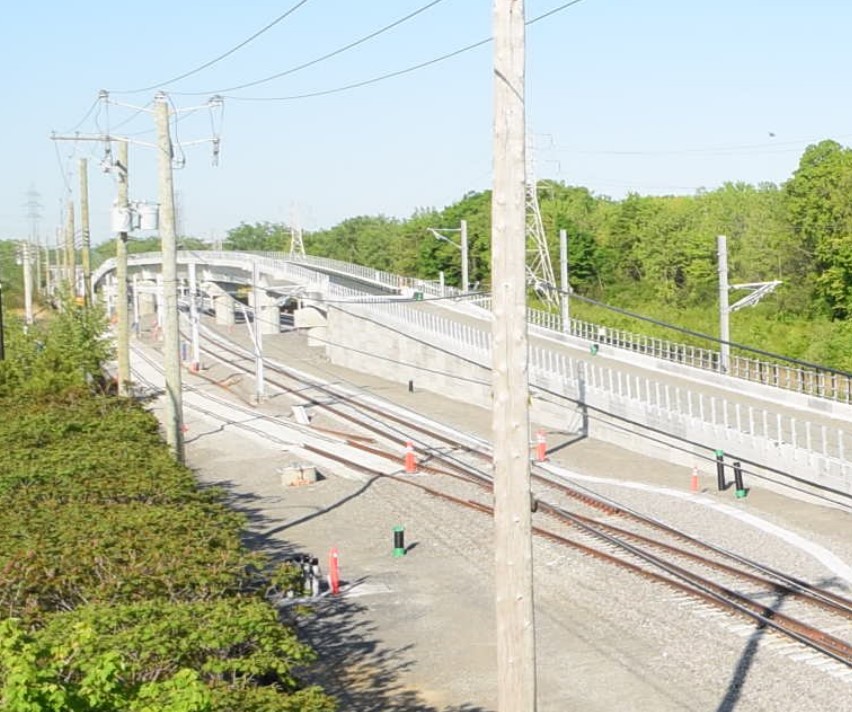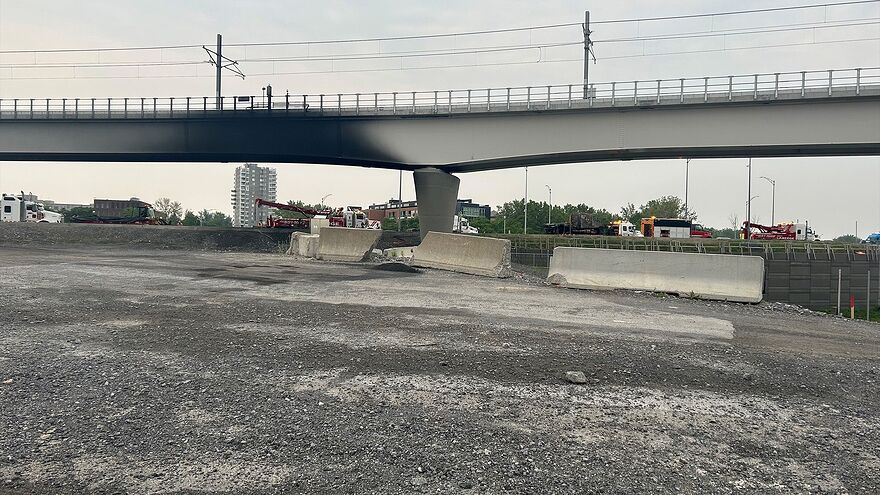You are using an out of date browser. It may not display this or other websites correctly.
You should upgrade or use an alternative browser.
You should upgrade or use an alternative browser.
Montréal Transit Developments
- Thread starter Ansem
- Start date
Mind_the_gap
Active Member
^ Sorry @NoahB, or anyone who can answer this - I assume the junction shown above is where the Deux-Montagnes and Anse-à-l'Orme/YUL branches diverge. If so, how will the YUL branch diverge from the Anse-à-l'Orme branch? Will it also be grade-separated, or at-grade (like UP Express)?
This really peaks my interest because this will be the best example of branching (automated) ”metro” services in Canada since the SkyTrain.
Edit: I recently found out about the Devisubox cameras - they’re a great way to check on the status of multiple REM stations and the main junction.
This really peaks my interest because this will be the best example of branching (automated) ”metro” services in Canada since the SkyTrain.
Edit: I recently found out about the Devisubox cameras - they’re a great way to check on the status of multiple REM stations and the main junction.
Last edited:
ShonTron
Moderator
Member Bio
- Joined
- Apr 24, 2007
- Messages
- 12,568
- Reaction score
- 9,601
- Location
- Ward 13 - Toronto Centre
^ Sorry @NoahB, or anyone who can answer this - I assume the junction shown above is where the Deux-Montagnes and Anse-à-l'Orme/YUL branches diverge. If so, how will the YUL branch diverge from the Anse-à-l'Orme branch? Will it also be grade-separated, or at-grade (like UP Express)?
This really peaks my interest because this will be the best example of branching (automated) ”metro” services (edit: in Canada) since the SkyTrain.
That branch-off will be right by the A-40/Henri-Bourassa/Alfred-Nobel interchange. It looks like it will be a flat junction, which should be fine given the lower train frequency vs. the Boul. Thimens junction.
Mind_the_gap
Active Member
These Fires really got me thinking - How resilient are the elevated structures on the REM to earthquakes?
It’s surprising to see all the single-pier spans on the West Island branch - even highway overpasses (typically) have/had more piers to distribute the load. Then there’s all the stations being supported by a single (thin) pier with separate platform structures built around them.
Pierrefonds-Roxboro especially, should’ve been built with highway overpass-style concrete-slabs on the sides, like the tail tracks at Deux-Montagnes. Would it have been possible to trench Kirkland instead of going so high up also? I really do respect the effort they made throughout the system though.
As much as I love the REM, these elevated structures really seem flimsy to me. Hopefully there aren’t serious construction quality issues as with Edmonton’s (SE) Valley Line’s piers.
At least the CDPQ really got something right, by deciding on emergency stairwells at intersections, instead of forcing passengers to walk to the nearest station like in Vancouver.
Sending my love out to you all in QC/PQ and NS!!!
It’s surprising to see all the single-pier spans on the West Island branch - even highway overpasses (typically) have/had more piers to distribute the load. Then there’s all the stations being supported by a single (thin) pier with separate platform structures built around them.
Pierrefonds-Roxboro especially, should’ve been built with highway overpass-style concrete-slabs on the sides, like the tail tracks at Deux-Montagnes. Would it have been possible to trench Kirkland instead of going so high up also? I really do respect the effort they made throughout the system though.
As much as I love the REM, these elevated structures really seem flimsy to me. Hopefully there aren’t serious construction quality issues as with Edmonton’s (SE) Valley Line’s piers.
At least the CDPQ really got something right, by deciding on emergency stairwells at intersections, instead of forcing passengers to walk to the nearest station like in Vancouver.
Sending my love out to you all in QC/PQ and NS!!!
NoahB
Active Member
These Fires really got me thinking - How resilient are the elevated structures on the REM to earthquakes?
It’s surprising to see all the single-pier spans on the West Island branch - even highway overpasses (typically) have/had more piers to distribute the load. Then there’s all the stations being supported by a single (thin) pier with separate platform structures built around them.
Pierrefonds-Roxboro especially, should’ve been built with highway overpass-style concrete-slabs on the sides, like the tail tracks at Deux-Montagnes. Would it have been possible to trench Kirkland instead of going so high up also? I really do respect the effort they made throughout the system though.
As much as I love the REM, these elevated structures really seem flimsy to me. Hopefully there aren’t serious construction quality issues as with Edmonton’s (SE) Valley Line’s piers.
At least the CDPQ really got something right, by deciding on emergency stairwells at intersections, instead of forcing passengers to walk to the nearest station like in Vancouver.
Sending my love out to you all in QC/PQ and NS!!!
Not sure how resilient they are. But not sure the fact that they use single piers is inherently bad.
They those pier spans in Tokyo.
The Yurikamome line: (Google)
Tokyo Monorail:

In Jakarta, another seismically active city, they are building lots of rail with single piers too. Here is their new "Jabodebek LRT" line. (source)

Mind_the_gap
Active Member
In Jakarta, another seismically active city, they are building lots of rail with single piers too. Here is their new "Jabodebek LRT" line. (source)

Thanks for bringing up the Jabodebek LRT. It really is a good example:

SourceThe Greater Jakarta Light Rail Transit Project (LRT Jabodebek) is an infrastructure project that utilizes lead rubber bearings (LRBs) to reduce seismic demand on structures. This seismically isolated system shall provide operational performance levels under design earthquakes. Nonlinear time-history analysis was used to evaluate the structural performance. Five pairs of scaled ground motions were used as the input motions for the time-history analysis. The ability of the lead rubber bearing to isolate the structures and dissipate earthquake energy will determine its effectiveness in achieving the targeted structural performance level. From this exercise, the targeted performance was achieved.
nfitz
Superstar
CharmAlarm
Active Member
Quebec City residents given a choice to vote on three tram designs:
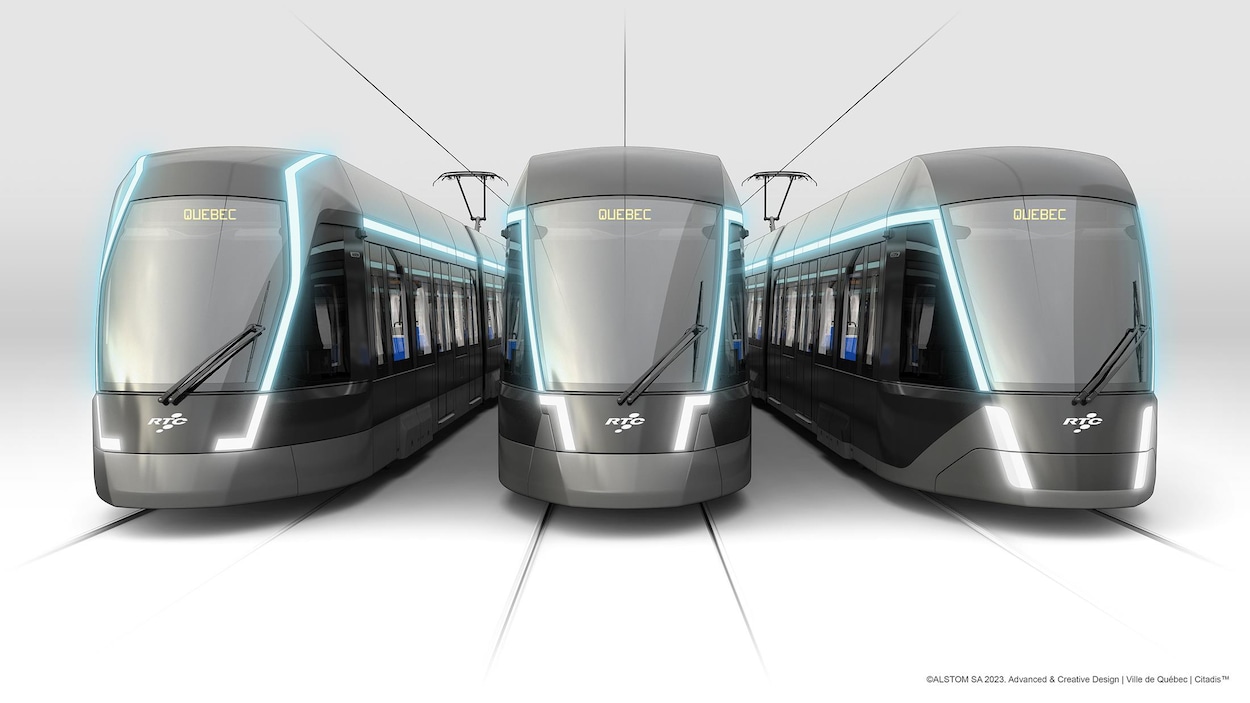
 ici.radio-canada.ca
ici.radio-canada.ca

Le design du tramway de Québec dévoilé
Les citoyens seront invités à sélectionner le concept qui sera retenu parmi trois propositions.
dullturtle06
Active Member
wish we had such an opportunity for toronto transitQuebec City residents given a choice to vote on three tram designs:

Le design du tramway de Québec dévoilé
Les citoyens seront invités à sélectionner le concept qui sera retenu parmi trois propositions.ici.radio-canada.ca
officedweller
Senior Member
For the elevated section of the Broadway Extension for Vancouver's SkyTrain, some of the girders sit on the column caps, while others are more fixed in place with a concrete plug. It's a short elevated section, so they used girders instead of the segmental post-tensioned system used for longer stretches.
You can see where there's rebar on the column caps in this video:
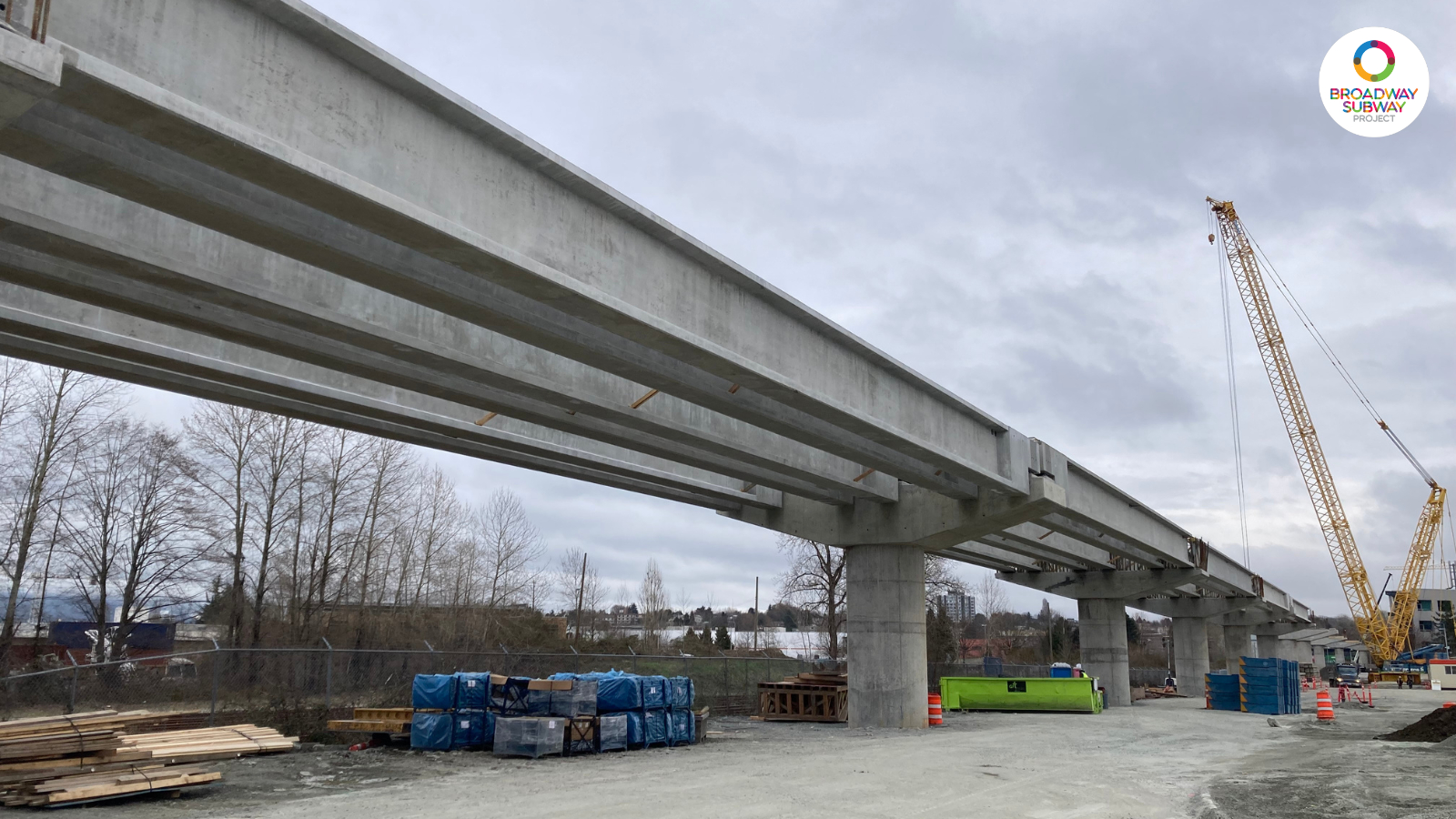
You can see where there's rebar on the column caps in this video:

Last edited:
Mind_the_gap
Active Member
APTA-2048
Senior Member
We have those homely “TR2”s to look forward to.wish we had such an opportunity for toronto transit
NoahB
Active Member
REM to Brossard is expected to open in August if final testing goes well!
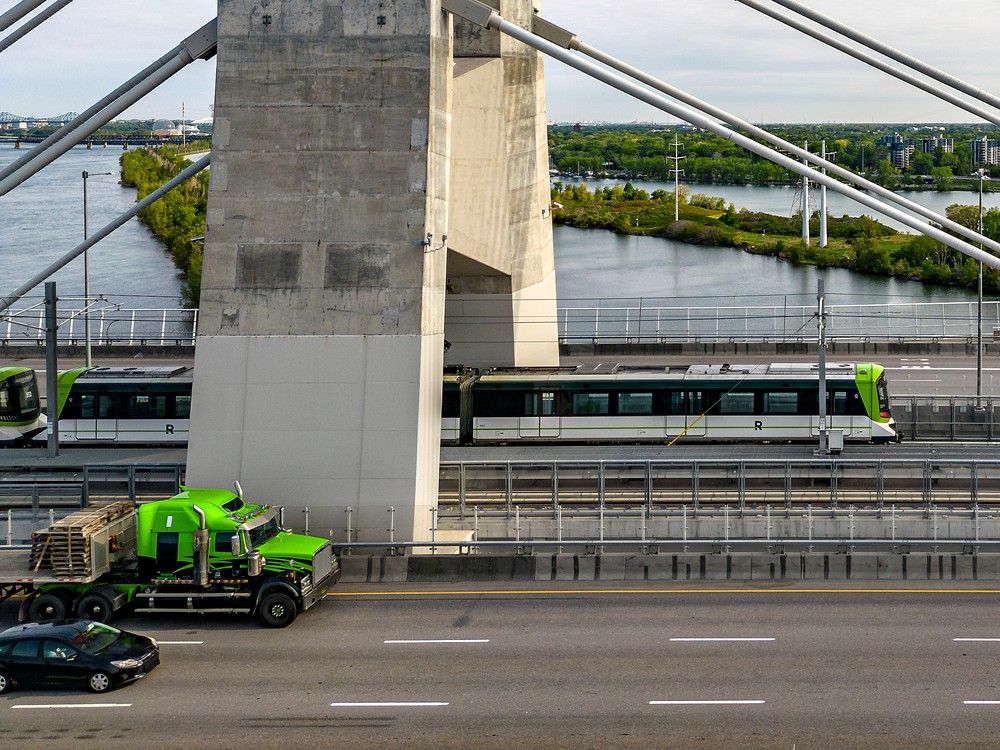
 montrealgazette.com
montrealgazette.com

REM's Brossard-Montreal line scheduled to start running by mid-August
News of the light-rail system's long-anticipated opening came hours after it was announced that test runs between Brossard and Central Station will begin Wednesday.
nfitz
Superstar
Only 4 to 6 weeks of test runs? I'd have thought they'd have been doing more of that before even starting trial operation, let alone full operation.
You'd think that the agency responsible would be ultra careful after the Ottawa debacle, for a brand new system. I'd think even an extension would see longer trial running.
You'd think that the agency responsible would be ultra careful after the Ottawa debacle, for a brand new system. I'd think even an extension would see longer trial running.
begratto
New Member
They've been doing very frequent test runs for a year and a half already, covering two winters. These are the final tests.Only 4 to 6 weeks of test runs? I'd have thought they'd have been doing more of that before even starting trial operation, let alone full operation.
You'd think that the agency responsible would be ultra careful after the Ottawa debacle, for a brand new system. I'd think even an extension would see longer trial running.





